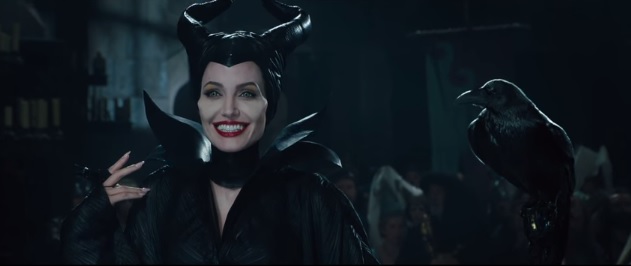As a young girl I loved Sleeping Beauty—I hummed “I Know You” and dreamed of true love’s kiss.
I even had (err, have) a Sleeping Beauty snow globe. However, Disney’s “Maleficent” reminded me of how much I’ve changed, not to mention how much Disney has changed. I no longer want to be the “sleeping beauty,” but instead I crave the power and beauty of the hero/villain Maleficent.
While I don’t want to spoil the movie for those who haven’t seen it yet, I do want to point out two very important (and unexpected) themes of the Disney film—rape and the shadow.
Maleficent (her name is derived from the Latin word maleficus, meaning: “make or do wicked or ill”) is a fairy with beautiful, large wings.
She is happy and free-spirited (wings will do that I suppose) and then falls in love with a human boy.
Things go well for a long time and then the ongoing rivalry between the human kingdom and magical moors becomes increasingly violent. The human king offers the throne to whoever kills Maleficent, the leader of the magical land.
Stefan, Maleficent’s love, returns to moors and drugs Maleficent and cuts off her wings.
She awakens screaming and is in so much pain she can barely walk (at this point in the film the reference was so powerful that I burst into tears and the little boy next to me asked if I was okay).
The metaphor is obviously one of rape—Maleficent has something forcefully taken from her, by someone she trusted and knew—70 percent of women of assault are attacked by someone they know.
After the incident she becomes sad, vengeful and even builds a wall of thorns to “protect” herself (in fairy land it is built of literal thorny vines, in the human world is usually less obvious).
While Disney may not be coming out and saying it directly, the film speaks volumes about rape culture and its prevalence.
It even addresses the impact it has on victims and their perpetrators. Stefan’s life, even as king, becomes unbearable as he turns into a fearful, paranoid and angry man.
In the original Italian version of Sleeping Beauty, Aurora (from the Sanskrit root word meaning “dawn”) was raped by the king during her slumber and had several children while she was sleeping. She was awakened not by a handsome Philip, but by one of her children dislodging the splinter she got from pricking her finger.
We Americans prefer the “true love” version which has been adapted to our desire to push aside what isn’t so pleasing.
Alas, there is no ignoring the darkness in this new Disney film; in fact Aurora even says she can see Maleficent in her literal shadow following her. At one point Maleficent attempts to explain to Aurora about the evil in the world. As Aurora is first blessed with beauty and happiness—of course, the two most important attributes for a woman—at her birth, she seems out of touch with a part of herself and the world.
It is Maleficent as her “fairy godmother” who is able to show her the dark side of existence.
In Jungian and depth psychology terms, this dark side within us is called “the shadow.” It’s the part of us we don’t want to look at because it isn’t very pretty. It contains our anger, sadness, greed, jealousy and all the things that might be considered more primitive.
The paradox is that the more we become familiar with this part of ourselves the more whole we become.
Throughout the film, Maleficent’s character allows us to witness her descent into her own shadow. (Unfortunately, in her case she was forced to look at the darker side of life and then eventually the darkness in herself.) It was only after she dove into her depths that she emerged more powerful and balanced than before.
She becomes a hero/villain in which she is simultaneously light and dark, happy and angry, beautiful and ugly.
While “fairy tales” now are considered to be pretend (like myths), they mirror an often unconscious reality in the form of symbolism. The word “fairy” has its roots in Sanskrit meaning “account or narrative” and seems to imply history as spoken records and not necessarily entirely make believe.
I believe fairy tales have a reality all of their own, they represent a part of our psyches that understand things differently. In the case of Maleficent, the truth of our darkness reveals itself as a dark fairy.
Ultimately, it is this shadowy fairy who is the most capable of love in the film. Not “true love,” the way we think of it as romantic love, but as a love that is true.
Love with an open, caring heart—a love possible only from a hero/villain.
Love elephant and want to go steady?
Sign up for our (curated) daily and weekly newsletters!
Apprentice Editor: Bronwyn Petry / Editor: Catherine Monkman
Photo: YouTube screenshot.






Read 0 comments and reply